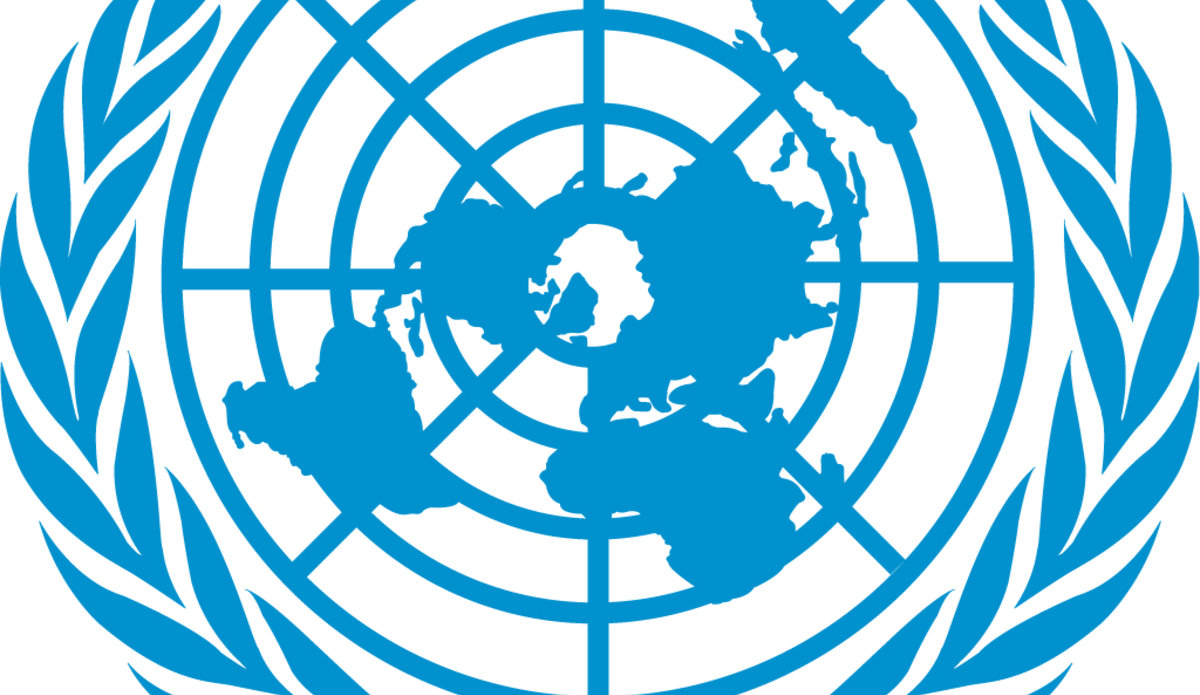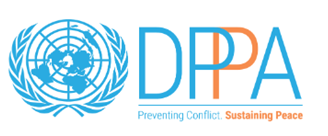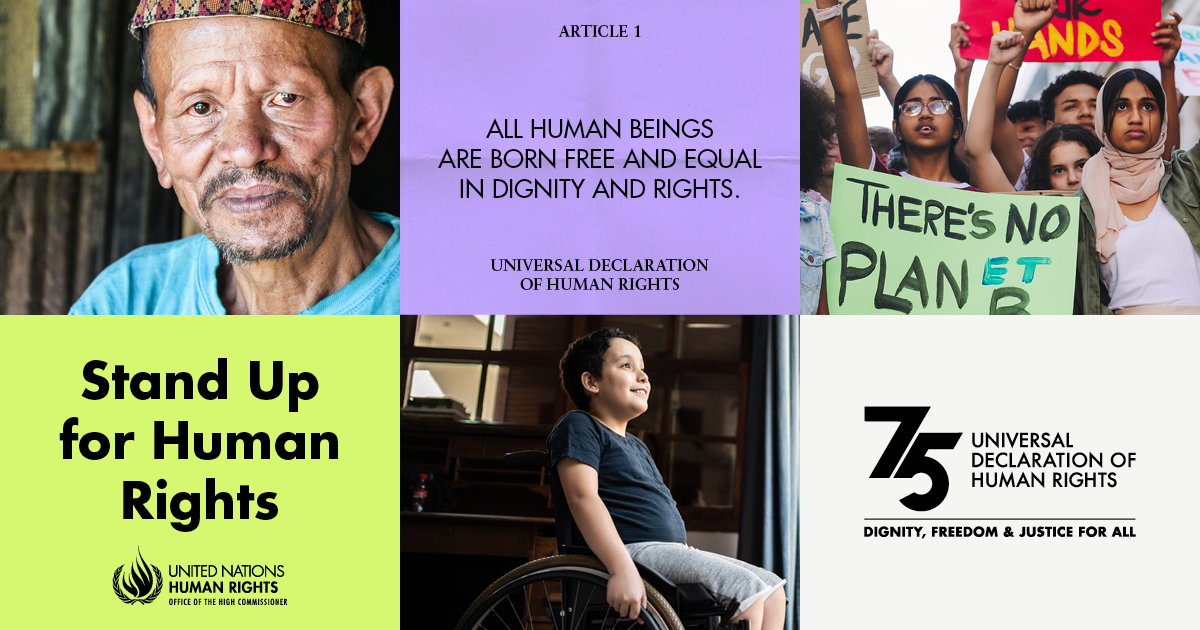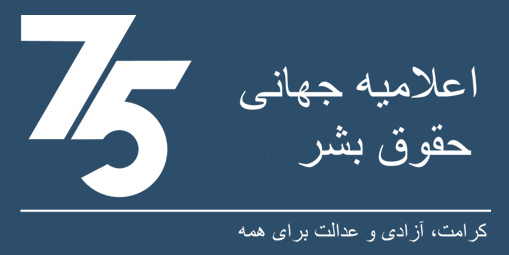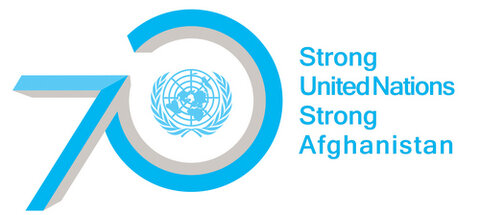Press conference with UNAMA and World Bank
KABUL - Transcript of press conference by Dr. Hamish Nixon, Sub-national Governance and Service Delivery Specialist, World Bank and Dr. Nazifullah Salarzai, UNAMA Spokesperson’s Office.
UNAMA: Good morning everybody. I’m Nazifullah Salarzai from the UNAMA Spokesperson’s Office. We’re pleased to be joined by Dr. Hamish Nixon, Sub-national Governance and Service Delivery Specialist of the World Bank. Dr. Hamish will make some remarks about a recent World Bank report. But before I handover to Dr. Hamish, I would like to make some announcements from the United Nations activities.
AFGHAN YOUTH TO CELEBRATE INTERNATIONAL YOUTH DAY AND DISCUSS THEIR PRIORITIES AT A CONFERENCE
International Youth Day will be celebrated in Kabul tomorrow 5 August 2008 from 9 am to 5 pm at the Intercontinental Hotel in Kabul
The main objective of the Afghanistan International Youth Day 2008 will be to use the Youth Declaration from last year as a starting point to organize working groups.
These groups will discuss and raise awareness on youth issues and consult the youth on the implementation of the Afghanistan National Development Strategy (ANDS).
They will also strengthen the partnership and collaboration between the government and the youth in order to facilitate the establishment of Youth Associations based on volunteerism.
For further information please collect a press release in Dari, Pashto and English from side table.
UNMACA WORKSHOP ON REGIONAL VICTIM ASSISTANCE
Government officials, civil society members and NGOs are getting together in Kunduz to develop regional action plans which will help achieve goals and objectives in support of the Afghanistan Disability Action Plan.
A two day “Regional Victim Assistance” workshop starts tomorrow with the financial and technical support of the United Nations Mine Action Centre for Afghanistan (UNMACA) in Kunduz province.
The workshop is hosted by the Ministry of Labour, Social Affairs, Martyrs and Disabled. About 55 government officials, NGOs and Civil Society Organizations have been invited from four North East Region provinces.
Media interested in press briefing on this workshop can contact UNAMA PIO Mr. Shamsuddin Hamedi on 0799 128 217 or e-mail him at hamedis@un.org.
WORLD BANK: Good morning and many thanks to UNAMA for sharing their platform with us at the World Bank. I’m very happy to be here this morning. Yesterday afternoon the World Bank launched a new report which discussed public finances at sub-national and local levels in Afghanistan and that launch was attended by and had the participation of UNAMA and other high representatives of the Government of Afghanistan and other donors. I’m very pleased to be able to share with you today some of the key findings from that report and of course answer questions about it. There are also summaries of the report available in English and Dari here today as well as a press release.
As you are no doubt aware, in the last few years there has been a lot of recognition that it’s very important to strengthen the sub-national or the local systems of governance and service delivery in Afghanistan. The Afghanistan National Development Strategy discusses the importance of better sub-national governance if its three basic goals of improved governance improved security and economic development are to be realized and the creation last year of the Independent Directorate of Local Governance further points to this new attention.
There are many other reforms and activities among both donors and government ministries which are aimed at improving further the situation of sub-national government. And we at the World Bank are very interested in supporting and building on these efforts in co-operation with UNAMA, the international community and our partners in the Government.
Sub-national governance is an important issue because a well-functioning sub-national system is supposed to make sure that people at local levels have their voices heard when development or services are planned, and that these services are responsive to their needs, and that they are delivered in efficiently and equitably. A very important part of any sub-national governance system is the fiscal system – this is how revenues, how budgets and how expenditures take place at different levels and places in the administration and the country.
So the new report which was launched yesterday builds on previous research which the World Bank released about a year ago on sub-national institutions including provincial councils, provincial development committees and these types of bodies. And this new report builds on that by exploring the issues that face the fiscal system the sub-national system of financing services.
I’ll briefly explain a little bit about how the research was carried out and what the most important findings are and of course we can go into that in more detail during the discussion. Basically we looked at the way that resources are distributed in Afghanistan at sub-national levels and by that I mean the resources which are on the core and external budget though of course other resources which come to Afghanistan via different channels but on the Government budget in its two parts the core budget and the external budget we looked at two different aspects. So we looked at two different aspects of the system. One is where resources are expended in terms of at levels of administration, so how much is expended at the centre, how much at provincial levels at municipal levels and at local levels.
So I’ll talk about that vertical distribution of resources for a moment first, that is where resources are expended at levels of government.
What we did here that is different from reporting on the national budget and other research before rather than only looking at where the disbursement of the money is recorded is it recorded at the central level or the provincial level within the Ministry of Finance systems we also looked at what the money is used for and so we developed a measure of sub-national expenditure as opposed to sub-national disbursement and I can explain that a little more clearly.
Because the system of budgeting and expenditure in Afghanistan is very centralized most expenditures are recorded in the centre. One of the expenditures which are recorded in the provinces is salaries. But many other things are recorded in the centre. For example that if the Ministry of Health purchases medicines which are used in a provincial clinic that expenditure is still recorded in the centre.
So put simply we used a measure which tries to determine which spending is used for the benefit of institutions or people at sub-national levels and not only look at where the expenditure or the disbursement of the money was recorded. When we do that we get a very interesting result which is that actually about 68% of public spending, money which is on the core and external budget, is for purposes which are sub-national. It’s for activities and services which take place at the provincial, local or municipal level: about 68%.
But 76% of all the public money is recorded as being spent in the centre what this means is that there’s a big difference between what money is used for and where the decisions about its budgeting takes place. We call this a vertical fiscal imbalance, which can be an obstacle to improving the efficiency, effectiveness, and the accountability of public services especially at local levels.
One of the conclusions of the report is to try to bring in ways for having meaningful input from the provincial level into the national budgeted process to help ministries budget for public services at the provincial level.
This doesn’t mean the creation of an independent provincial budget. What it means is that provincial departments of ministries like education and health can play a larger role in planning provincial and local services and we hope to be able to assist the Government build on already existing pilot programmes to help to do this.
There’s chart number one and a section of the summary of the report which deals with that and if there are questions about that we can look at that.
The second important finding is a little bit simpler to explain. That is that using this measure of expenditure where money is used we also find that there are large inequalities in the distribution of the resources across provinces in Afghanistan.
What this means for services within the budget different provinces receive quite different amounts per head of population. It is important that I also note here that this is based on figures from the core and external budgets again. There is also as I said earlier lots of other sources of money which make it even more difficult to measure to exactly how many resources are going to which places.
These differences are also varying depending on the type of spending. So for salaries there are some variations, for development spending there are other variations that means that different parts of the budget are not very well aligned with each other the example would be you may have salaries for teachers going heavily to one area of the country but operation and maintenance expenditure for pens and pencils possibly not going in proportion with that.
There could be many reasons for these discrepancies but a lot of them simply have to do with the lack of mechanisms for planning distribution across provinces within given sectors and there are a lot of ways to improve that situation without making very radical changes to the structure of the budget.
Equitable distribution of resources is a clear goal of the Government of Afghanistan in its policy documents in the charter of the Independent Directorate of Local Governance and certainly in statements by the parliament and the World Bank looks forward to supporting that goal.
The last finding I wanted to discuss very briefly is about municipalities. The report also looks at the resources available to municipalities. What we find is that municipalities are responsible for raising all of their own revenue and they have in the law quite clearly defined a very wide range of responsibilities for delivering services to municipal populations both in rural and urban municipalities. But the ability of municipalities in different parts of the country to raise their own revenues really varies and is much smaller in some places than in others.
At the same time there is no system for transfer of money from the central government to municipalities to cover that fiscal gap in providing services, with the exception of Kabul which does receive some transfers from the central government.
So roughly speaking the report suggests there are three areas in which further activity in reforming fiscal policy of sub-national policy may bring good results and where the World Bank is hoping to support the Government of Afghanistan
The first is how the national budget is formed with input from different levels of administration but within the existing framework of the unitary state and a centralized treasury; the second is to develop mechanisms to help ensure that expenditure, but really that means services, are delivered across the country in a way which is equitable and which is fair and to develop a framework for effectively financing municipal services.
We at the World Bank are eager to support the Government of the Islamic Republic of Afghanistan in confronting these challenges in ways that support and complement ongoing reforms within the Ministry of Finance and which compliment the Afghan Government's sub-national governance policy process currently being coordinated by the Independent Directorate of Local Governance.
QUESTIONS AND ANSWERS
RFE/RL [translated from Pashto]: As You mentioned it is a very technical report and I don’t know how to report on that and what to collect out of this briefing. But in general what I understood is that you mentioned about the inequalities of expenditures within some provinces, also you mentioned that it may be because of lack of mechanisms. On the other hand you are the specialist of governance, don’t you think that in some provinces due to good governance they could attract and raise more revenues to spend according to their needs, while in some other provinces because of weaker governance they can’t raise and absorb enough budget for their needs? What is your opinion about this?
WORLD BANK: There are several challenges. One challenge is that even knowing how many resources go to which provinces, because many of the resources are on the national budget but many other resources are on the external budget and even some resources are given to Afghanistan and to particular provinces without being reported to the Ministry of Finance. That makes it very difficult to even know the true distribution of resources first.
That’s one reason why we at the World Bank believe that it is very important for donors to try to channel resources through national programmes and the national budgets, or if they can not do so at least to report them accurately to the Ministry of Finance through the external budget. But what we did here is to take the money on the actual budget for example the money spend on the salaries of teachers, recurrent expenditure within education and divide it by the population of the province. It is a very rough measure but what you can see is that some provinces may receive, let’s say for not only for education but say all government salaries, some provinces will receive only 200 Afs. per person in the population and in some other provinces will receive 2000 Afs. per population sometimes. So you sometimes have a factor six or ten times difference. Of course there are problems with the data and population because we haven’t had the census yet. But roughly speaking the main point we are trying to make is that at the moment there is no system for logically allocating those resources. So there are ways to make that more equitable and also more transparent which are fairly easy to work into the budget system and that’s what we’re interested in doing.
AFGHANISTAN TIMES [translated from Pashto]: You said some of the provinces receive less or no budget or resources. Please name them. Also as you said there is not enough input, let’s say between sub-national and national levels. Don’t you think that this discrepancy between sub national and national levels will create opportunity for corruption?
WORLD BANK: The summary of the report gives a distribution of the recurrent expenditure per person by province and what we see is something quiet surprising, this is only the money in the core national budget spent on recurrent expenditures, this means the salaries of government employees and operations and maintenance of government facilities.
What we find there is actually Kabul receives least recurrent expenditures per population and one reason for that may be that the population has grown very much in the last few years so the number of civil servants serving Kabul itself is lower in terms of salaries compared to many other provinces.
When we turn to development expenditures we also find a big variation between provinces and the full report which I would be happy to distribute it to any of you, has details about that. But the important thing to remember is that it is only measuring the development spending on the budget. So in that case many provinces which are insecure show themselves to be very low on development spending. Other provinces which receive many through the budget are higher on the development spending. But there may be money coming from other sources in those insecure provinces which are not recorded on the external budget very accurately. That makes it impossible to say with certainty that one province receives the most or the least but what we do have is a picture. The picture is an unequal one. Sometimes the reasons may be political but there are other reasons which are simply a feature of the budget system and that’s an area that the World Bank is able to focus on.
GMA [translated from Dari]: Your point about municipalities was not clear to me. Could you please elaborate on it?
WORLD BANK: There is actually quite a clear law in Afghanistan which determines municipalities are responsible for a wide range of services such as removal of solid waste, road repairs and provision of other services. But because the municipalities are responsible for these services it doesn’t mean they have resources to provide them. What the report shows is that from raising their revenue like property tax, bazaar tax and business tax the municipalities as a whole in the country can only raise about half of their required revenue. So there is a gap and that gap in Afghanistan is either met by another ministry, either the Ministry of Public Works or the Ministry of Urban Development, or the service is not delivered. What we point to is simply: there is no system for transferring money as a grant either from the central Government to the municipalities or as you have in some countries between municipalities to equalize. What you have in Afghanistan is the municipalities can only spend the money which they raise themselves. There is an exception which is the Kabul municipality which receives some funds form the Central Government.
IRNA [translated from Dari]: As you mentioned there has not been a census in Afghanistan. What criteria have you used to calculate budget per population?
WORLD BANK: This is precisely one of the problems we are pointing to. From what we can tell you most sectors, the provision of resources to the provinces, is mainly based on what has happened, for example allocation of the previous year plus maybe four per cent or it is based on other factors which are not clear. So we are proposing two types of ways of improving this situation: one is that if the provincial level of the department has more input into the budget it can better transmit the needs of that province. There are in fact already some reforms at the Ministry of Finance aimed at this and we hope to build on those. The second way to improve this also is to have some kind of budget norm or some kind of guidance for how much is distributed. An example would be primary education salaries: you would want them to be roughly in proportion to the number of school age children in that province. If you used a formula like this which is based on the number of school age children it also increases transparency to get to our colleagues or to other questions on corruption. Because the people or the parliament can look at the allocation of the budget and say is this meeting the formula of providing a certain number of salaries per school aged child for example. Obviously these systems will work better with better data we have about population and about the needs of different provinces.
RTA [translated from Pashto]: How much money has the World Bank has spent in Afghanistan during 2007 and how sure you are about transparency in this spending?
WORLD BANK: I don't have the total figures for World Bank assistance to Afghanistan but we have our own programmes and we also channel other donors' resources to the Afghanistan Reconstruction Trust Fund (ARTF) which is a multi-donor trust fund giving money to the government budget, but with the appropriate budget safeguards. Abdul Raouf Zia our press officer can talk about the total amount of World Bank assistance to Afghanistan after this conference. I am only working in this special area, I am not aware of the other areas.
PAJHWOK [translated from Dari]: I wanted to know about the amount of unrecorded money, where has it been spent, which areas and how much?
WORLD BANK: The short answer is no, because it has not been recorded. Many of the donors have become more aware of the importance of recording their programmes, if they are not able to use the national budget mechanisms or the Afghanistan Reconstruction Trust Fund mechanism. However, there are a lot of challenges to recording some of the expenditures including donors have different fiscal years, some double counting of expenditures. I think there is still a long way to improve the recordings of those off budget expenditures to the external budget system of the Ministry of Finance. But it is the position of the World Bank to provide assistance in ways that supports the Afghan Government systems, builds capacity and reduces corruption in the Afghan Government system. We try to encourage all of our partners in the international community to work in that same direction.
 UN
UN
